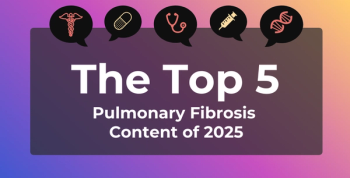
CT Scans Allow Calculation of Ratio to Predict Recurrence of CRS With Nasal Polyps
A ratio of sinus scores calculated based on computed tomography (CT) imaging can accurately predict the recurrence of chronic rhinosinusitis (CRS) with nasal polyps, according to new findings.
A ratio of sinus scores calculated based on computed tomography (CT) imaging can accurately predict the recurrence of chronic rhinosinusitis (CRS) with nasal polyps, according to new findings.
According to the authors, CRS with nasal polyps commonly recurs, even after sinus surgery, with one study estimating the 8-year recurrence rate at 21.8%. Tissue eosinophil counts and proportions, as well as the presence of eosinophilic mucin, have been used as markers for recurrence, but these tests are invasive or require surgery. Recently, investigators have suggested that CT scans, already used to diagnose eosinophilic CRS (ECRS), have the potential to predict recurrence of CRS with nasal polyps.
The current study aimed to investigate the usefulness of CT scans for predicting recurrence among 272 patients with CRS with nasal polyps who were to undergo endoscopic functional sinus surgery at a hospital in China. Participants were enrolled between June 2014 and May 2015 and underwent CT scanning before surgery.
The scans were scored by 2 radiologists who assessed the maxillary sinus score (M score) and total ethmoid sinus score (E score) of both sides of the sinuses. These scores were used to calculate an E/M ratio, or the ratio of the E score to the M score.
Of the 230 patients remaining in the study after an average follow-up time of 24 months post surgery, 118 (51.3%) had recurrence of their CRS with nasal polyps. The investigators identified several characteristics, including E/M ratio, tissue eosinophil percentage, and tissue eosinophil absolute count, that were significantly higher in the recurrence group.
Receiver operating characteristic curve analysis of the factors revealed that E/M ratio and tissue eosinophil percentage showed high accuracy as predictors of recurrence (area under the curve, 0.947 and 0.916, respectively). Investigators calculated a cutoff point of 2.55 for the E/M ratio that had good sensitivity and specificity (95.8% and 91.1%, respectively). This cutoff point would correspond with a CT scan showing ethmoid sinus—dominant opacification.
The study authors suggested that the mucosal edema and polyposis often seen around the middle turbinate in patients with ECRS could show up on scans as opacification around the ethmoid sinuses. ECRS has been shown in prior studies to be associated with CRS recurrence.
Although tissue eosinophil percentage was also found to be a good predictor of CRS recurrence, the procedure performed to obtain nasal tissue is invasive, presents a risk of bleeding for some patients, and is often inconvenient to perform in outpatient settings. Additionally, studies have used criteria for tissue eosinophil percentage ranging from 5% to 50%, “which makes it difficult to define a reliable measure,” the authors wrote. “From this standpoint, the E/M ratio appears to be superior to tissue eosinophil percentage as a prognostic indicator for CRS recurrence.”
However, they noted that in patients whose CT scans revealed a pan-sinusitis pattern, the E/M ratio would not apply, so tissue eosinophil percentage should be used to predict recurrence in these patients.
The investigators concluded that a noninvasive method of predicting recurrence, such as the CT scans used in their research, could enable more patients to understand their risk of recurrence and decide between sinus surgery and pharmaceutical symptom control. They recommended that all adult patients with CRS with nasal polyps “should have had a CT scan before surgery for determination of E/M ratio and should avoid any additional investigations, unless pan-sinusitis has been demonstrated.”
Reference
Meng Y, Zhang L, Lou H, Wang C. Predictive value of computed tomography in the recurrence of chronic rhinosinusitis with nasal polyps [published online June 25, 2019]. Int Forum Allergy Rhinol. doi: 10.1002/alr.22355.
Newsletter
Stay ahead of policy, cost, and value—subscribe to AJMC for expert insights at the intersection of clinical care and health economics.







































